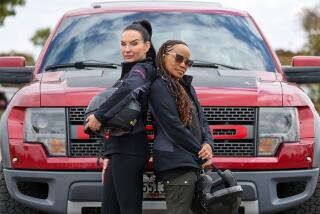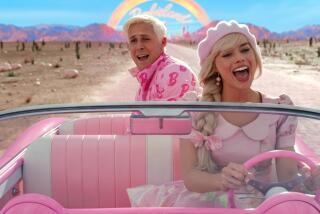Gender inequality still has a starring role in Hollywood, USC study finds
Cinema trends ebb and flow, but one facet of Hollywood moviemaking proving remarkably consistent is gender inequality, according to a study being released Monday by USC’s Annenberg School for Communication & Journalism.
In a survey of the top 100-grossing movies of 2009 — including “Transformers: Revenge of the Fallen,” “Harry Potter and the Half-Blood Prince” and “The Twilight Saga: New Moon” — researchers found that 32.8% of the 4,342 speaking characters were female and 67.2% were male, a percentage identical to that of the top-grossing movies of 2008.
“We see remarkably stable trends,” said USC Annenberg associate professor Stacy L. Smith. “This reveals an industry formula for gender that may be outside of people’s conscious awareness.”
It’s not just the ratio of female to male characters that continues to be imbalanced but the manner in which they’re depicted, according to Smith.
The USC study determined that women were still far more likely than men to wear sexy clothing in movies, such as swimwear and unbuttoned shirts (25.8% versus 4.7%), to expose skin (23% versus 7.4%) and to be described by another character as attractive (10.9% versus 2.5%).
Revealing clothing and partial nudity was just as prevalent among 13- to 20-year-old female characters as it was among those 21 to 29, suggesting that females are sexualized on-screen at young ages, Smith said.
Behind the camera, the gender inequality is just as dramatic: only 3.6% of the directors and 13.5% of the writers on the top-grossing films of 2009 were female, according to the study.
Researchers found that the sex of the storytellers had a significant effect on what appeared on-screen. In movies directed by women, 47.7% of the characters were female; in movies directed by men, fewer than a third of the characters were female. When one or more of the screenwriters was female, 40% of characters were female; when all the screenwriters were male, 29.8% of the characters were female.
“Some of this is a function of the fact that we see more males working behind the scenes than females, and they’re telling the stories that they know,” Smith said. “If the numbers behind the scenes move, we’re likely to see numbers on-screen move.”
There is one area where women surpassed men in films in 2009 — they bought more than 50% of the movie tickets sold in the U.S., according to the Motion Picture Assn. of America.
“Females represent half of the population and half of moviegoing audiences, but they don’t hit a third of the characters,” Smith said. “Male consumers aren’t the only ones going to the movies, but our cultural storytellers today are male. The problem is really thinking about the perpetuation of the status quo.”
More to Read
The biggest entertainment stories
Get our big stories about Hollywood, film, television, music, arts, culture and more right in your inbox as soon as they publish.
You may occasionally receive promotional content from the Los Angeles Times.







